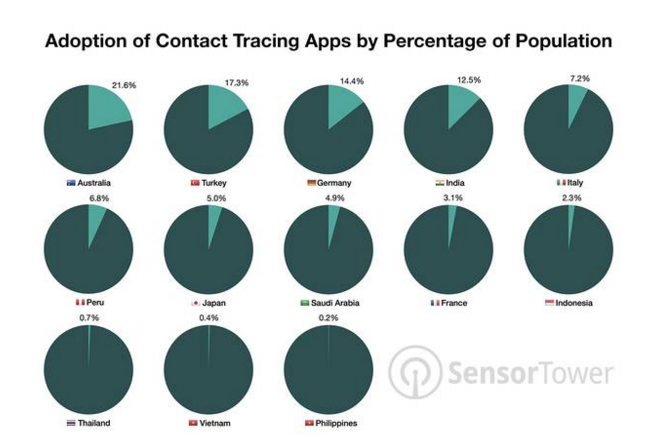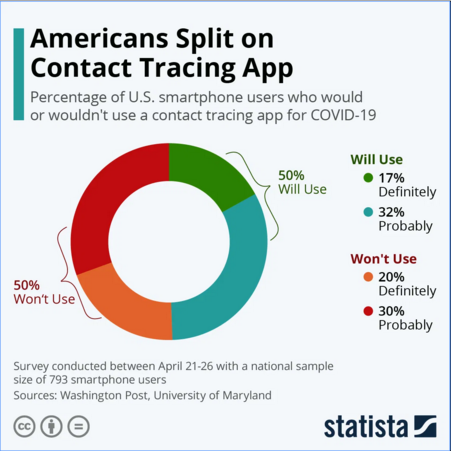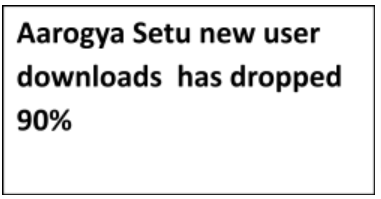Blog
Why are intelligent device + software based solutions better than App Based solutions for protecting workplaces
Mar 28, 2021 | COVID 19
Intelligence-enabled devices versus mobile apps.
What’s the smarter COVID protection solution for the workplace?
In the first wave of infection and global response, governments turned to digital technology for solutions that could notify individuals, track infection vectors and enable public social management. Apps became the preferred method of scalable direct response. From France to Australia, dozens of countries, health organisations and concerned international groups launched a variety of COVID19 centric apps with some estimates placing the number at over 80 apps.

The most widely publicized were the contact tracing apps that used location markers to notify users of their proximity exposure to individuals or spaces that may have been infected with the COVID19 virus. Besides contact tracing, symptom monitoring apps were developed to collect information about a user’s health through symptom identification questions, from which an initial diagnosis could be made. There were also a number of information apps which offered bytes on the disease, hand hygiene, sanitisation practices, mask use, social distancing and official guidelines to be followed. Some of these apps like Germany’s Corona-Warn App were open-source and shared common data and technology solutions to operate at scale.
After an initial hype, the placebo of COVID tracking apps wore thin.

Technology limitations, technical vulnerabilities, functionality problems and foundational issues made the mobile app sensor strategy increasingly questionable for public spaces and workplaces. At the technology level, the penetration of smart phones and phone internet access in many countries and regions remains poor. Phones in network poor or dark areas would automatically curtail app function. In many countries, infection data analysis was hamstrung as both Google and Apple restricted how much Bluetooth scanning centralized apps could do in the background. In France and Australia, an audit of tracing apps showed that almost no notifications were sent out. The French StopCovid app alerted just 14 people that they may have been exposed to COVID19 in its first 3 weeks. In India, despite over 140 million people downloading the Aarogya Setu app, its use, efficacy and even constitutional legality remained nebulous.
Over 90 per cent of the population did not or were unable to participate. While many banks, food and logistics businesses made it mandatory, no business was aware of or even benefitted from the app’s contact-trace function. Without data and a response mechanism, this app devolved into becoming more of bureaucratic gate manager for most businesses. Inevitably, these and other contributory factors led to country-wide deployment failures for most app based contact tracing solutions.

Are off-the-shelf, app-based COVID infection management solutions effective for workspaces?
For most businesses, the lure of utilising a no-cost-to-company app solution seemed attractive. Besides low cost, easy deployment and automation would have looked like the ideal solution. But as always, the devil was in the details.
While employees may download an app due to mandatory instructions, they could fail to self report a positive alert out of fear of stigmatization, a misplaced belief in their immunity or simply because they felt they were asymptomatic. Then there is the very nature of the workplace, an employee once outside, may choose to switch off the app and void its efficacy.
There were also technological challenges. Employees could switch off the app due to lack of phone memory resources for additional app support, phone battery drain or inadvertent sensor muffling in internal spaces such elevators, basement areas and concrete shielded internal rooms. For many phones that used Bluetooth sensor based apps, shut down on screen lock or low battery was a default feature, so tracking effectiveness was switched off, or worse, bugs in the technology drained batteries so quickly, users simply deleted the app like in France.
Even the Bluetooth sensor-based reporting came to be questioned for effectiveness. On one hand, an app could report false positive notifications for low risk events of people passing each other on a street or separated by Bluetooth-conductive walls in the workspace. After a few such false alarms, and consequent self-isolation or testing anxieties, users would ignore these as ‘cry wolf’ alerts. On the other hand, if an app’s proximity sensor algorithm was too conservative, and failed to flag potential risk, even if proximity indicated an infected individual, it could lead to a false sense of security.
There were also questions of traditional legal safeguards, such as sunset provisions to guard against mission creep, secondary use and data retention that protected privacy. The anxiety was that the app reporting data could be misused, manipulated to create an illusion of safety and justify business management’s decisions to stay open despite health risks.
Protect your business with a device and software solution that is more purpose-built and intelligent.
Equip your business with the advanced TracePlus solution. Based on nominative device-based technology and enabled by centralized software algorithms, this adaptive and intelligent Contact Tracing Technology avoids the shortcomings of app-centric solutions. It creates a purpose-built emitter and sensor network around your workspace that incorporates user locations but does not depend on the user for activation. Can make a list of pros & cons comparison to make it easier to read. The system is easily deployable in 48 hours, non-intrusive, and operates automatically. The detection sensors offer a one-meter radius of sensitivity, with tracking data of all workforce interactions and distancing pinged to a centralized point. The intelligent analytics modules are able to provide advanced insights like Population Risk indexes, which can assist managers in manpower allocation, compliance monitoring, traffic control, and interaction management.
Incorporating the TracePlus solution is a more resilient method of protecting your workspace from the risk of wildfire COVID19 infections by responding to ground zero risk events and isolating individuals quickly. This near real time speed of response mitigates costly total business shutdowns or ‘sick building syndrome’. To ensure smoother employee on-boarding, data privacy guarantees are in place to ensure that data is strictly accessed within the organization and only by pre-cleared personnel during office hours.
The constant traffic view and interactive oversight of TracePlus, creates confidence among management and employees that the business can continue operating without the overhang of a costly total shutdown or unmanaged risks to health. Beyond COVID19 risk mitigation, the advanced TracePlus ability of tracking employee interactions with locations and peers opens up a new world of useful applications, from tighter security bubbles to optimization of human resource allocations. In effect, TracePlus offers SMEs, MEs and large business groups a purpose-built device and software solution that outclasses what an app-based system can possibly do.
